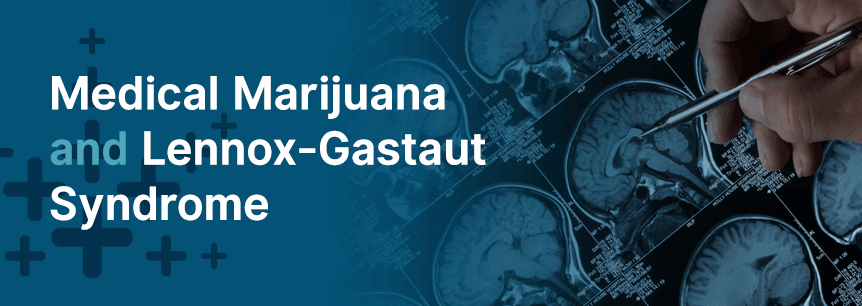
Lennox-Gastaut syndrome (LGS) is among the debilitating conditions cannabis and its cannabinoids could be helpful for. It typically strikes children between the ages of three and five. Medical marijuana for Lennox-Gastaut syndrome can be an effective treatment option for seizures and the condition’s other symptoms. Learn more about the condition and how medical cannabis can help.
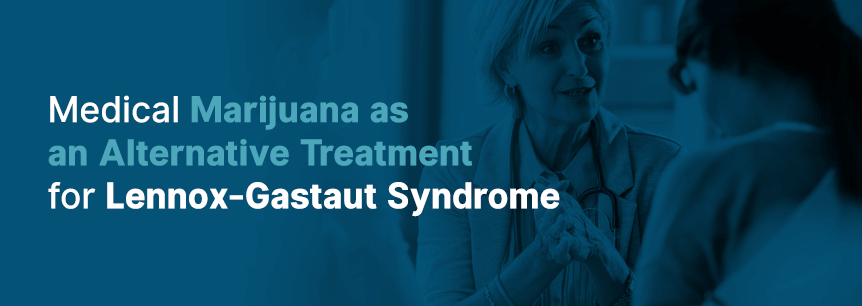
Researchers have found the body’s endocannabinoid system (ECS), the major regulatory network keeping a whole range of functions in balance, plays a role in decreasing seizure activity. The endocannabinoids or cannabinoids the body synthesizes by itself have shown in research to play a role in regulating seizure intensity and threshold.
Cannabinoids interact with the ECS’s cannabinoid receptors, particularly the CB1 receptor, and dampen the release of neurotransmitters, producing an overall decrease in neuronal excitability that reduces seizure activity. These findings suggest marijuana-derived cannabinoids could also play a beneficial role in treating seizure conditions, like Lennox-Gastaut syndrome.
Medical marijuana and Lennox-Gastaut syndrome treatment can help treat several symptoms of LGS, including:
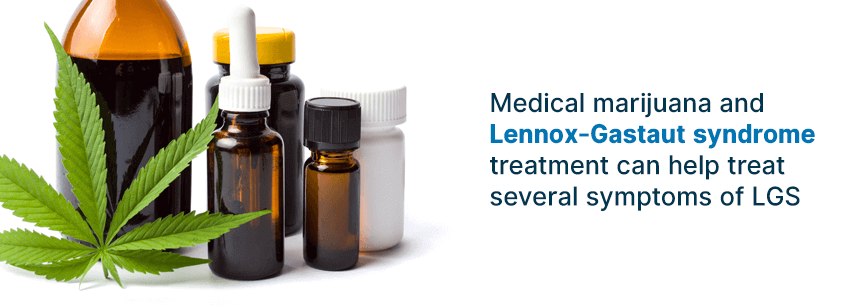
Many individuals who suffer from epilepsy or another seizure disorder have found relief from cannabis, either by taking it together with more conventional medicines or by itself. Other people who struggle with seizures, but aren’t able to tolerate anti-seizure medicines, have used medical weed to control their seizures successfully.
Strains for seizures include:
Marijuana for Lennox-Gastaut syndrome can stimulate your metabolism, helping to increase your appetite. It gives people “the munchies” where they have a raging hunger after using weed. However, this could be a good side effect if your child is struggling with a medication-related loss of appetite.
Most cannabis strains can help with hunger. However, some that can be ideal are:
Insomnia can affect your child’s day-to-day life severely. Medicines for treating insomnia can be addictive and can also cause negative side effects your child shouldn’t have to deal with. Using medical marijuana for insomnia is a great alternative without the possible side effects for many people.
Strains for insomnia are:
Some estimates indicate that 55 percent of those who suffer from epilepsy also experience depression at some point in their lives. Depression significantly lowers quality of life. And, it can directly increase the frequency of seizures through failing to recognize depression, not receiving the proper treatment or sleep deprivation. Antiepileptic medication can also worsen depression.
Strains for anxiety and depression include:
Medical pot can cause some of its symptoms, including:
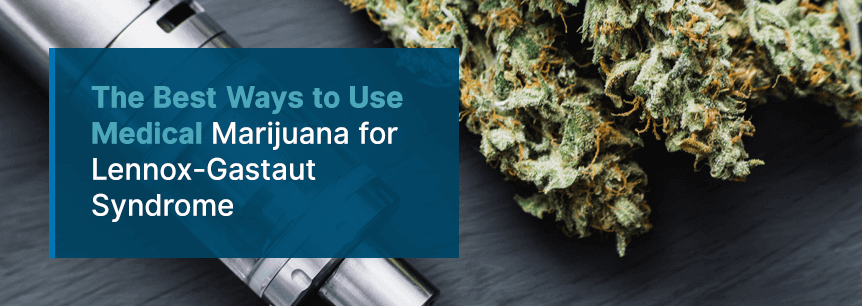
A few good marijuana and Lennox-Gastaut syndrome methods of delivery for children are:
Lennox-Gastaut syndrome is marked by epilepsy (recurrent seizures) starting early in life. Those affected have numerous types of seizures, impaired mental abilities and a particular brain activity pattern, known as slow spike-and-wave.
Individuals with Lennox-Gastaut syndrome have a greater risk of death than those their age without the condition. While certain components of this risk are still not entirely understood, it is partly due to injuries from falls and poorly controlled seizures.
Several seizure types associate with Lennox-Gaustaut syndrome. These are four of the most common:
1. Tonic seizures: The most common type of seizure is tonic seizures, which stiffen (contract) your muscles uncontrollably. These seizures usually occur during wakefulness, causing sudden falls.
2. Atypical absence seizures: These are also common seizures that cause a temporary partial or total loss of consciousness.
3. Drop attacks: Many affected people have drop attacks, which cause them to fall suddenly, potentially leading to serious or life-threatening injuries. These might be due to abnormal muscle contraction (tonic) or sudden loss of muscle tone (atonic).
4. Cluster seizures: While each seizure event linked with the condition is typically brief, over two-thirds of people affected experience prolonged seizure activity periods — referred to as status epilepticus, or cluster seizures.
Individuals with Lennox-Gastaut syndrome have reported other types of seizures as well, although less frequently.
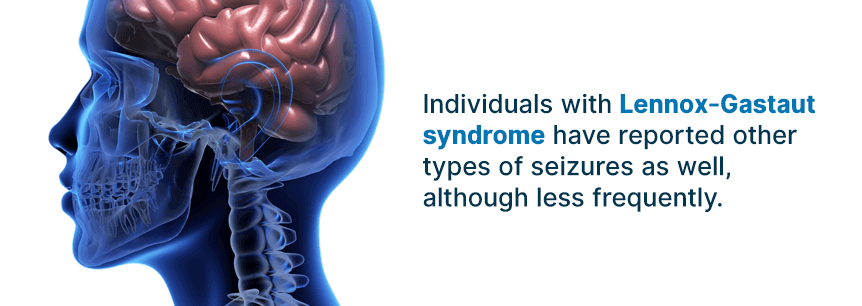
An aura may precede the seizures. An aura is a feeling a seizure may occur or a sensory change. Frequently, the child might feel groggy after having a seizure or might not even be aware they had one.
Some children will experience continuous seizures with no complete recovery between them or a seizure that lasts for 30 minutes. This is referred to as status epilepticus and requires medical attention. Additionally, seizures linked with Lennox-Gastaut syndrome often don’t respond positively to anti-epileptic medication therapy.
Lennox-Gastaut syndrome stems from various causes. In around 70 to 80 percent of people diagnosed with the condition, the cause is clear. For about 20 to 30 percent of cases, however, the origin isn’t known.
Some known LGS causes are:
There has been an increase in studies aiming to identify genes linked with LGS. Some studies found new gene mutations in individuals with LGS that weren’t previously known to be a causative factor.
LGS involves three specific symptoms:
Kids with Lennox-Gastaut syndrome have severe and frequent seizures, often hard to manage medically. Atypical absence, tonic and “drop attacks” are the seizure patterns that occur most often. Seizures often occur every day or more than once a day, which is much more often than with other forms of epilepsy.
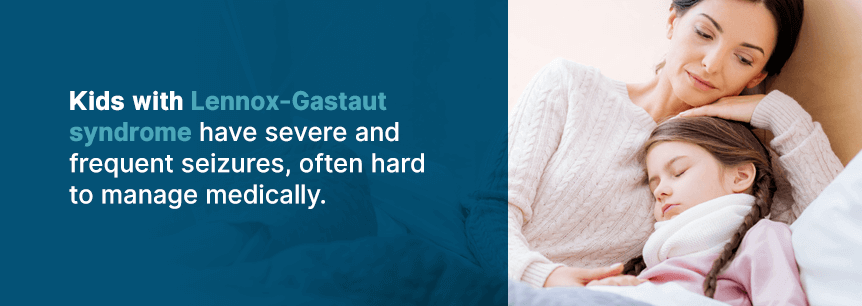
This includes:
Most kids with LGS have learning problems or intellectual disability even before the seizures start. These issues might become worse over time, especially if seizures occur often or are very severe. Some affected kids develop additional neurological abnormalities. Psychiatric issues and behavioral disorders and are also quite common in children with Lennox-Gastaut syndrome. Some children with LGS may display autistic characteristics and behaviors.
Many have delayed motor skill development like crawling or sitting. Because of their intellectual disability and seizures, most children with LGS require help with regular daily living activities. But, a small percentage of adults affected can live independently.
Some of the potential complications linked with LGS are as follows:
Treatment options for people living with LGS vary. Often, no single treatment may provide satisfactory control of Lennox-Gastaut syndrome. Therefore, the treatment goal is to provide patients with the medications that will result in the fewest seizures, the fewest negative treatment effects and the best quality of life.
While there’s no cure for LGS, there are various treatment options available. They include:
A low-carbohydrate, high-fat diet, known as the ketogenic diet, helps some individuals with epilepsy, including some kids with Lennox-Gastaut syndrome. It’s a low-carb, low-protein, high-fat diet. You’ll need a doctor’s supervision and to follow the diet strictly.
The doctor will continue to closely watch your child to see if or when they can lower their medication levels. Since this is a specific diet, your child might need to take mineral or vitamin supplements.
Doctors don’t have a full understanding of why this diet works, but some research shows kids with epilepsy who stick to the diet have a better chance of decreasing their medications or their seizures.
For some children, an Atkins diet could work as well. It’s a little different than the ketogenic diet. You don’t need to restrict protein, calories or fluids. You also don’t measure or weigh foods. You monitor carbs instead.
Individuals with seizures that aren’t responding well to treatment have also experimented with a low glycemic index diet. The low glycemic index diet focuses on the amount and type of carbs a person eats.
Physicians might prescribe some medications to treat LGS seizures. Finding the ideal treatment for your child could take some time and involve working closely with the doctor. A few medications used for treating seizures and their side effects include:
Typically, no single medicine completely controls seizures on its own. The doctor will closely monitor your child’s medicine, particularly if they take more than one at a time.
If medicines and other treatments aren’t decreasing how many seizures your child is having, the doctor may recommend surgery. There are a few different procedures:
IVIG is a type of blood product the surgeon administers intravenously, which can help treat Lennox-Gastaut syndrome and other types of refractory epilepsy. There’s growing clinical evidence IVIG might be beneficial in a few refractory seizure conditions.
Corticosteroids (mostly hydrocortisone and prednisolone) and ACTH have helped treat epilepsies for more than 50 years. Doctors continue to use ACTH as a first-line treatment option for Infantile Spasms (IS).
ACTH or oral corticosteroids can stop or reduce IS and normalize EEG findings in between 50 to 75 percent of individuals within a week or two after beginning treatment. But, there is controversy around the relation between the duration of spasms before diagnosis and treatment response regarding short and long-term outcome — especially cognitive and developmental.
If you would like to pursue medical marijuana for Lennox-Gastaut syndrome to treat your child and are looking for more information on the herb, MarijuanaDoctors.com can help. We have extensive information on medical cannabis and can point you in the right direction.
If after you obtain information on medical cannabis and feel it would be a great treatment option for your child’s seizures, search for a licensed cannabis doctor and book an appointment. You may also want to contact a local dispensary for specific strain information from a budtender.
Find A Doctor Find A Dispensary